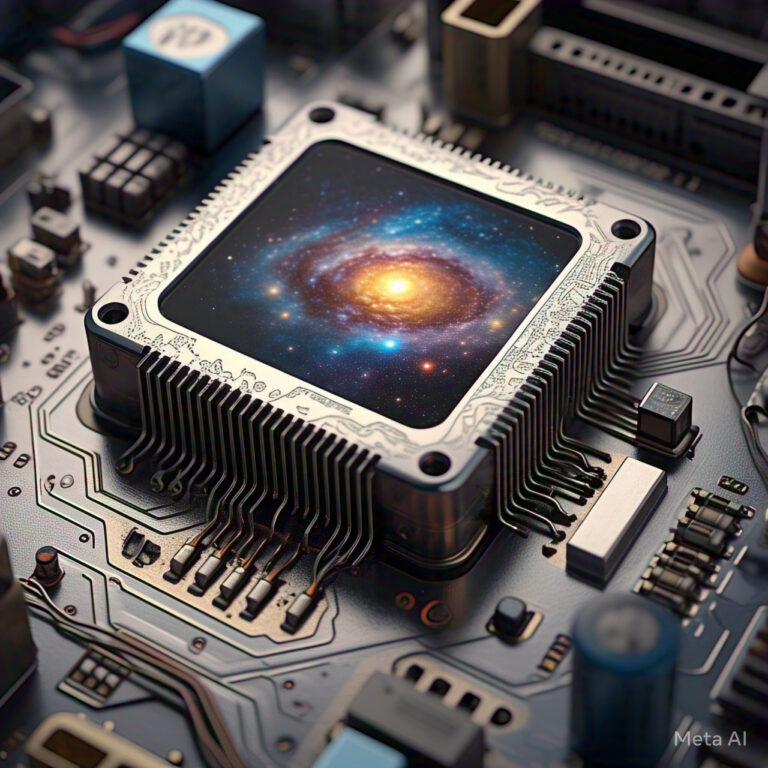Google’s Quantum Chip: The Universe in a Box?
In the field of science and technology, new breakthroughs happen every day, but some discoveries challenge the very boundaries of our reality. Google’s new quantum chip, Willow, has caused a real stir in the world of computer science and physics. This chip solved a problem in just 5 minutes—a task that would take the most powerful supercomputer in the world 10 septillion years (10 followed by 25 zeros) to complete.
However, this achievement is not just about the speed of computation—it has also made scientists wonder: Do we really live in a single universe, or are our calculations happening somewhere else as well? Could quantum computers be connected to parallel universes? Could Google’s Willow chip help us understand the multiverse theory?
In this blog, we will explore Willow’s historic achievement, the quantum principles behind it, and its possible connection to parallel universes.
Classical vs. Quantum Computers: What’s the Difference?
In computer science, there are two main categories:
Classical Computers
Use bits (0 or 1)
Perform one calculation at a time
Even supercomputers, while performing many calculations simultaneously, are still limited in their capabilities
Quantum Computers
Use quantum bits (qubits), which can exist in a state of superposition, meaning they can be both 0 and 1 simultaneously
Utilize quantum entanglement, where one qubit’s state can instantly affect another, no matter how far apart they are
Can process an astronomical number of possibilities at once, making their computational power millions of times greater than classical computers
Google’s Quantum Chip “Willow”: A Revolutionary Achievement
Google first claimed “quantum supremacy” in 2019, when their 50-qubit computer solved a problem in 200 seconds, which they argued would take a supercomputer 10,000 years. However, IBM challenged this claim, suggesting that a classical computer could solve the same problem in a matter of days.
Now, in 2025, Google has developed Willow, a 105-qubit chip that is exponentially more powerful than its predecessor. Willow solved the Random Distribution Benchmark problem, something classical computers could never achieve.
This problem was so complex that the fastest supercomputer would take 10 septillion years to solve it. But Willow completed it in just 5 minutes.
Is Willow Using Parallel Universes?
Willow’s achievement is so extraordinary that some scientists have begun asking: Is Willow using other universes to perform its calculations?
This idea is rooted in quantum mechanics, specifically in the Many-Worlds Interpretation (MWI) of quantum theory.
Does a New Universe Get Created for Each Computation?
In quantum mechanics, when a particle is measured, it “collapses” into a single state. This is the foundation of the Copenhagen Interpretation, which is the most widely accepted explanation.
However, the Many-Worlds Interpretation, proposed by physicist David Deutsch, suggests that every possible outcome of a quantum event happens in its own separate universe.
For example:
If you flip a coin, in one universe, it lands on heads, and in another universe, it lands on tails.
So when Willow performs calculations, is it exploring multiple realities simultaneously and then delivering the final answer to our universe?
This idea is still speculative, but if proven true, it could be one of the greatest scientific discoveries ever made.
Future Possibilities and Challenges
Revolutionizing Cybersecurity
Traditional encryption could be easily broken by quantum computers
But “quantum-resistant encryption” could be developed, making data ultra-secure
Discovering New Medicines and Materials
Quantum computers could precisely model molecules, accelerating drug discovery
Could lead to breakthroughs in material science
Improving Climate Modeling and Weather Forecasting
Could dramatically improve the accuracy of climate predictions
What Are the Challenges?
Willow has only 105 qubits, but millions of qubits will be needed for more complex problems
Quantum systems are fragile, and error correction remains one of the biggest challenges
Conclusion
Google’s Willow quantum chip marks a new era in technology. Whether it’s ultra-fast computing, scientific discoveries, or unlocking the mysteries of parallel universes, it has the potential to reshape our understanding of reality.
Is Willow computing in other universes, or is its power simply a reflection of advanced quantum mechanics? We don’t know yet.
But one thing is certain: The future will be exciting!


